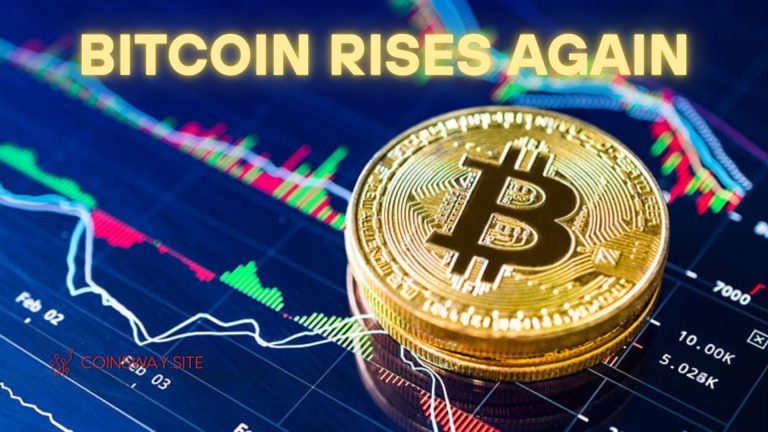Bitcoin Rises Again: The world’s first cryptocurrency, Bitcoin, has gone through a difficult time since its introduction in 2009. Bitcoin has drawn both fervent promoters and skeptics because of its wild price swings and subsequent steep declines. The question “Will Bitcoin rise again?” is ageless and pertinent, especially in light of shifting global financial environments, evolving laws, and technological breakthroughs. Even while nobody can predict the future with absolute certainty, some significant factors can help determine if Bitcoin will rise again.
Historical Resilience.
Numerous cycles of boom and bust have characterized Bitcoin’s history. From its peak of around $1,000 in late 2013, Bitcoin had fallen below $200 by early 2015. Many considered it dead. But by 2017, Bitcoin had risen to around $20,000, and by 2018, it had dropped to roughly $3,000. Once more, headlines were dominated by Bitcoin obituaries. In November 2021, however, it soared to an all-time high of almost $69,000. Bitcoin demonstrated its durability by rising again in 2023 and 2024, despite a big drop in 2022. Despite its volatility, this cyclical pattern highlights Bitcoin’s ability to bounce back from significant declines.
Whether Bitcoin will grow again depends on its core value proposition as a decentralized, global, and deflationary digital asset. Its 21 million coin supply makes it appealing compared to fiat currencies that are governed by inflationary monetary rules. Many investors view Bitcoin as a hedge against inflation, a store of value in unpredictable times, and the digital equivalent of gold.
Institutional Adoption and Market Sentiment.
Growing institutional acceptance has been a key factor in Bitcoin’s recent ascent. Financial behemoths including Goldman Sachs, Fidelity, and BlackRock have ventured into the cryptocurrency market by providing custodial services or investment products linked to Bitcoin. A number of spot Bitcoin ETFs were authorized in the United States in 2024, facilitating exposure to the asset for mainstream investors. Because of its legitimacy, Bitcoin is becoming more widely used by ordinary investors, hedge funds, and retirement funds in addition to tech-savvy individuals.
Institutional involvement typically results in increased liquidity, pricing stability, and credibility. It also gives confidence in the long-term viability of Bitcoin. As more traditional financial institutions participate in cryptocurrency, Bitcoin’s price and market value might rise again. Public opinion is important as well. In the digital era, when news spreads swiftly, rekindled positive sentiment may result in surges of purchases that raise the price.
Regulatory Landscape.
One of the main unanswered questions regarding Bitcoin’s future is regulation. Governments and regulators around the globe are still arguing about how to deal with cryptocurrencies. While some nations, like El Salvador, have embraced Bitcoin by acknowledging it as legitimate currency, others have imposed strict laws or outright banned it.
However, recent trends suggest that a more advantageous regulatory framework may be emerging. The U.S. Securities and Exchange Commission (SEC) has approved Bitcoin ETFs and given more accurate definitions of securities, despite its reservations. The European Markets in Crypto-Assets (MiCA) regulation aims to provide a comprehensive legal framework for digital assets. By reducing risk and ambiguity, these steps could make Bitcoin more attractive to a larger range of investors. However, overly stringent rules can hinder growth and undermine investor confidence, especially in big economies like the US, China, or the EU. The ability of Bitcoin to rise again may depend on countries’ decisions to regulate it in a fair and creative manner.
Technological Developments and Network Growth.
The Bitcoin network has also continued to evolve. Despite regular criticism for its fairly poor transaction rates and energy use, projects have attempted to remedy these problems. A second-layer option that speeds up and lowers the cost of transactions is the Lightning Network. Bitcoin’s utility and value could rise much further with the development of financial apps and infrastructure.
Network activity is still an important signal as well. The number of distinct addresses, the amount of transactions, and the hash rate—a measure of mining power—are all commonly linked to price patterns. An increased hash rate, which signifies growing security and confidence in the network, supports the case for a fee increase.
Macroeconomic Factors.
Furthermore, Bitcoin is more complex than it first appears. Its price is affected by broader macroeconomic issues. Interest rates, currency devaluation, inflation, and geopolitical turmoil all affect investor behavior. When traditional markets struggle or inflation lowers purchasing power, alternative assets like Bitcoin may become more appealing. However, if interest rates remain high and inflation levels off, investors might prefer bonds or traditional stocks to speculative assets like Bitcoin. The future course of Bitcoin will be significantly influenced by the state of the global economy.
Conclusion.
Will the price of Bitcoin rise again? There are several indicators that suggest the possibility of a result, but no outcome is certain. Because of its past resilience, increasing institutional backing, more transparent laws, technology advancements, and potential macroeconomic tailwinds, Bitcoin has a solid foundation for future growth.
However, it’s critical to understand the risks. There are still risks from technology, unexpected regulations, and volatility. Investors should approach Bitcoin with caution, wisdom, and a long-term perspective. In conclusion, betting against Bitcoin has frequently been a poor strategy. Even while it might not travel in a straight line, the forces behind it suggest that it is more than capable of rising again, perhaps to new all-time highs.


